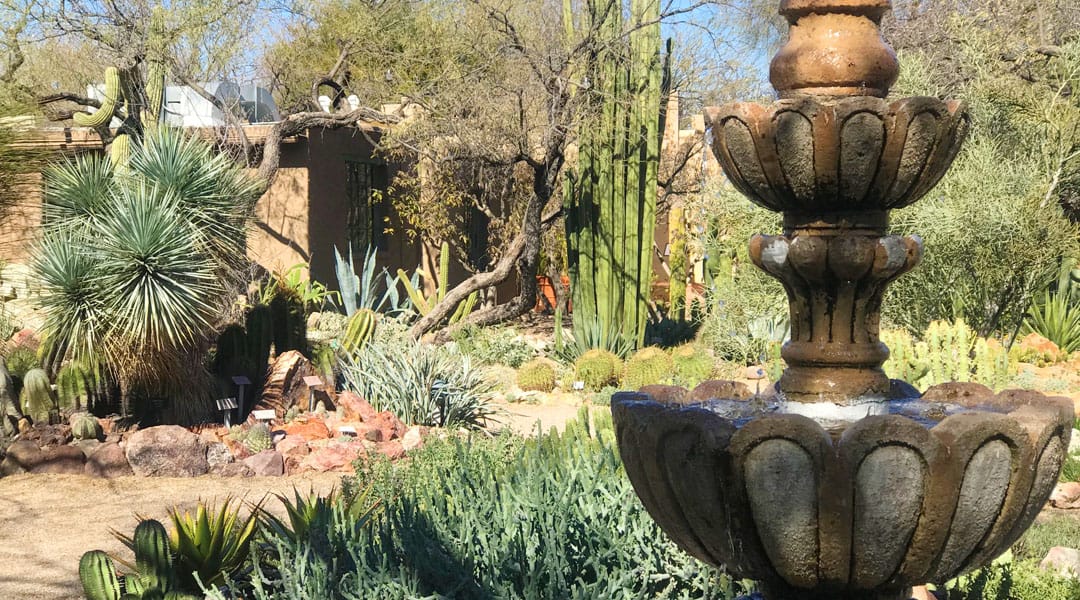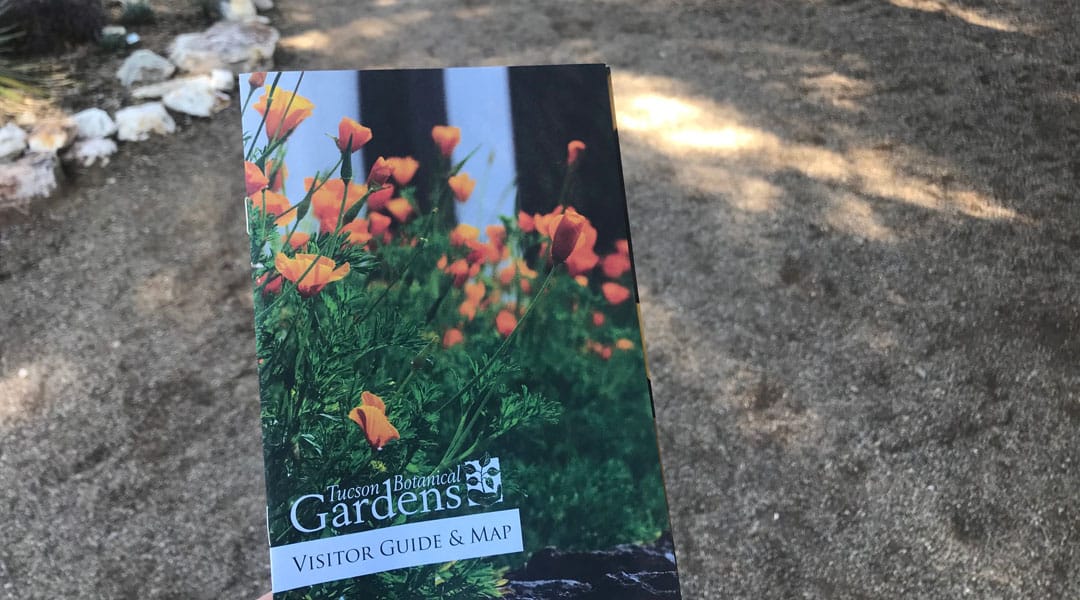 Note: This visit was from February 2020, before the Gardens shut down for months because of COVID-19. Now, they are reopened with safety procedures in place:
Note: This visit was from February 2020, before the Gardens shut down for months because of COVID-19. Now, they are reopened with safety procedures in place:
- New entrance – Signs will direct you from the parking lot to the new entrance. Note stickers on the ground that denote directional markers and social distance guidelines.
- Sanitizing – The Tucson Botanical Gardens team deep cleans every night and sanitizes all commonly used surfaces throughout the day.
- Masks – Guests to the Tucson Botanical Gardens are required to wear a mask as mandated by the City of Tucson.
- Attendance – There are limitations to the number of people allowed in the gardens at once.
- One-way flow through the Gift Shop
- Contactless payment – no cash accepted
- and more. See the Tucson Botanical Gardens website for more information.
Why Visit the Tucson Botanical Gardens?
The Tucson Botanical Gardens, located in midtown Tucson near Grant and Alvernon, often slips under the radar for locals and tourists alike. If you’re looking for a peaceful spot in the middle of town, some inspiration for your own yard, or an overview of what plants can grow in Tucson, this may be a solution.
Come along on a visual tour of the gardens as we detail some of the other reasons you may want to schedule a visit in the near future.
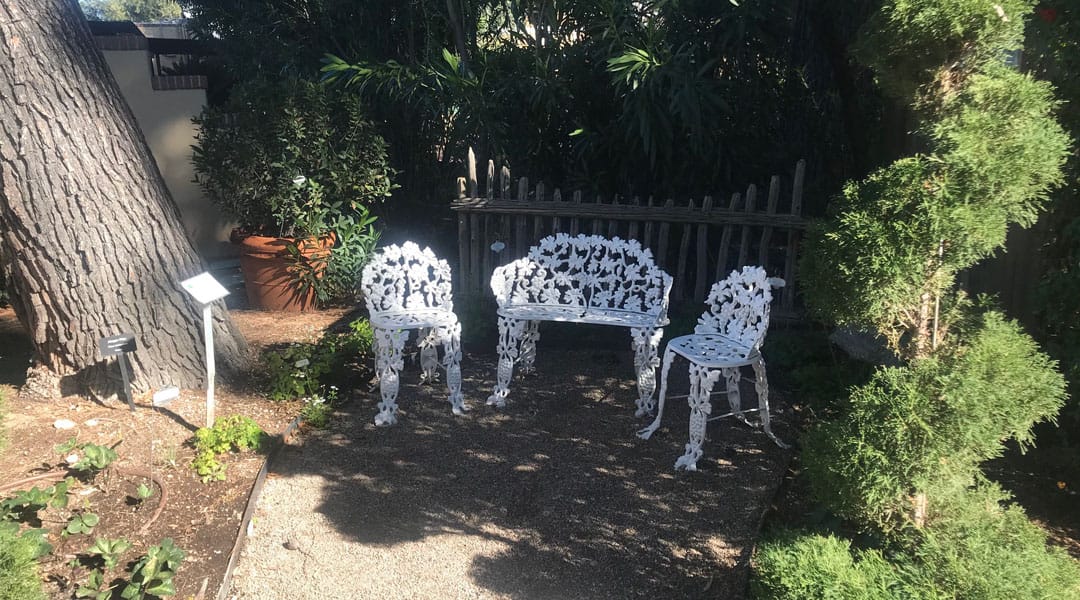
There are plenty of shaded areas to sit and enjoy the views around you
You Can Boost Your Mental Health
Did you know that being among nature is proven to boost your mood, lower your heart rate, and lower stress levels? There are dozens of studies touting the benefits that being among trees, seeing the color green, or even digging in the dirt can have on your mental (and sometimes physical) health.
I experienced this first-hand in February 2020 when a friend and I visited the Tucson Botanical Gardens. Between the perfect weather, the beautiful flowers, the shaded trees, and the peaceful butterflies, you would be hard-pressed to leave the gardens feeling anything but calmer and more relaxed.
Tucson Botanical Gardens describes itself as a “small public garden,” which seems accurate. It’s not too large that you feel overwhelmed trying to see everything, yet there is enough variety that there is something for everyone that visits.
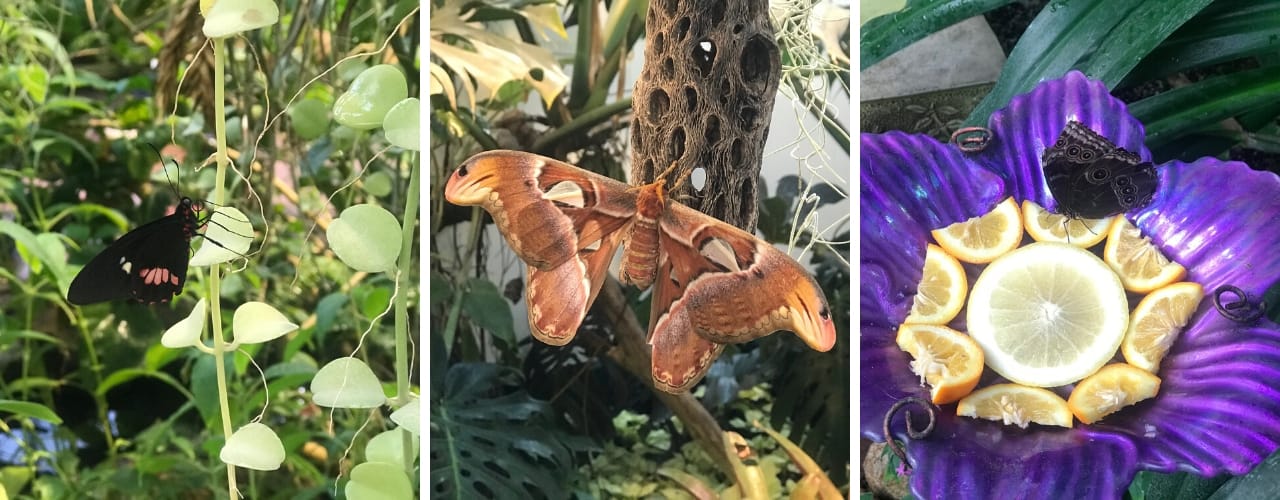 Spot the Wildlife
Spot the Wildlife
One of the more popular seasonal exhibits is the butterfly enclosure. While it can be a little offputting to have a giant winged insect fly towards your face or land on you, there is something calming and peaceful about them, too. Seeing the many types of butterflies is also a great reminder to plant pollinator-friendly plants in your Tucson yard. Plus, it’s so hot and humid in there that you can appreciate how dry Tucson is once you step out.
If you look closely, you can find other forms of life throughout the Tucson Botanical Gardens. Remember, a healthy ecosystem involves plenty of birds, insects, and spiders, lizards, and more.
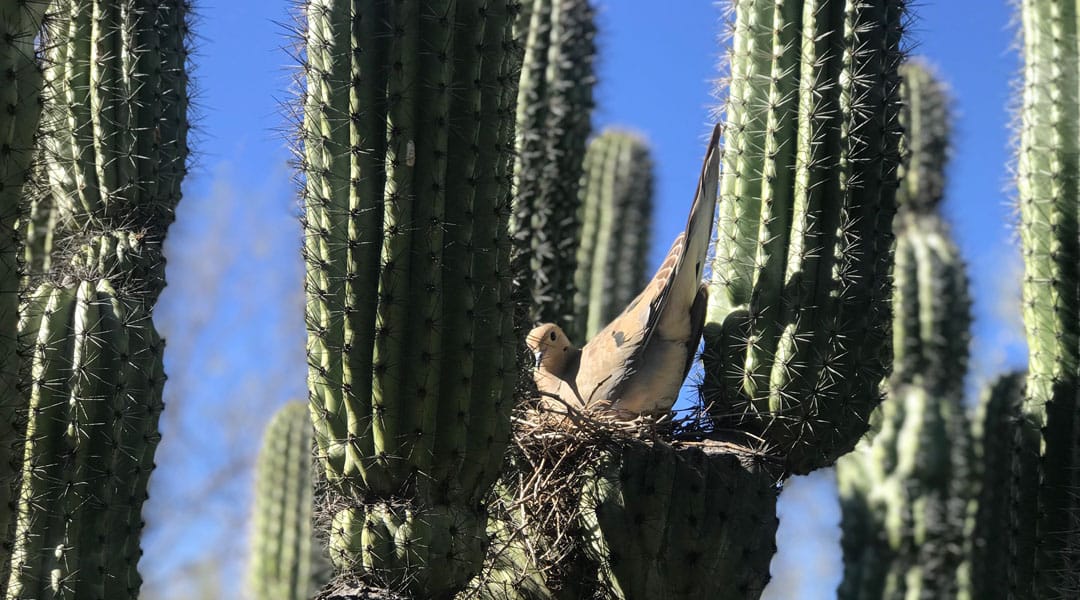
A mourning dove poses on her nest
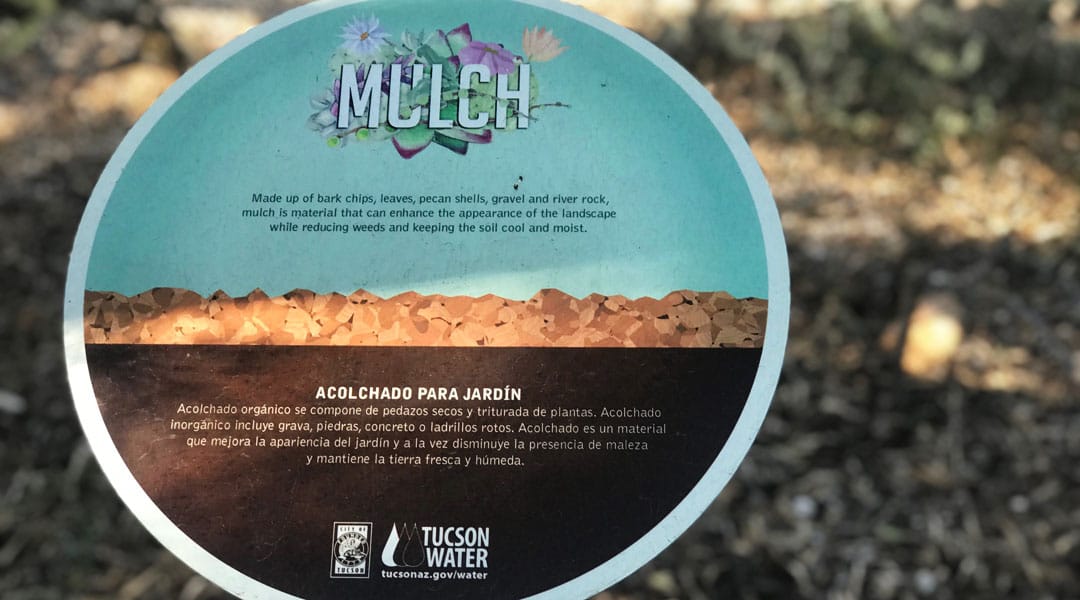 Learn Something New
Learn Something New
I don’t know what you notice when you go to a botanical garden or arboretum, but I’m always excited when I recognize any of the plants or trees. It was just as exciting to discover a new plant, tree, or flower, however, and made me appreciate how many plants can thrive in the Sonoran desert.
Placards placed around the gardens contain helpful information such as how to plant a tree, herbs that grow well in our climate, or details about the mulch that is used in the gardens.
There are new sights, sounds, and smells around each corner at the Tucson Botanical Gardens.
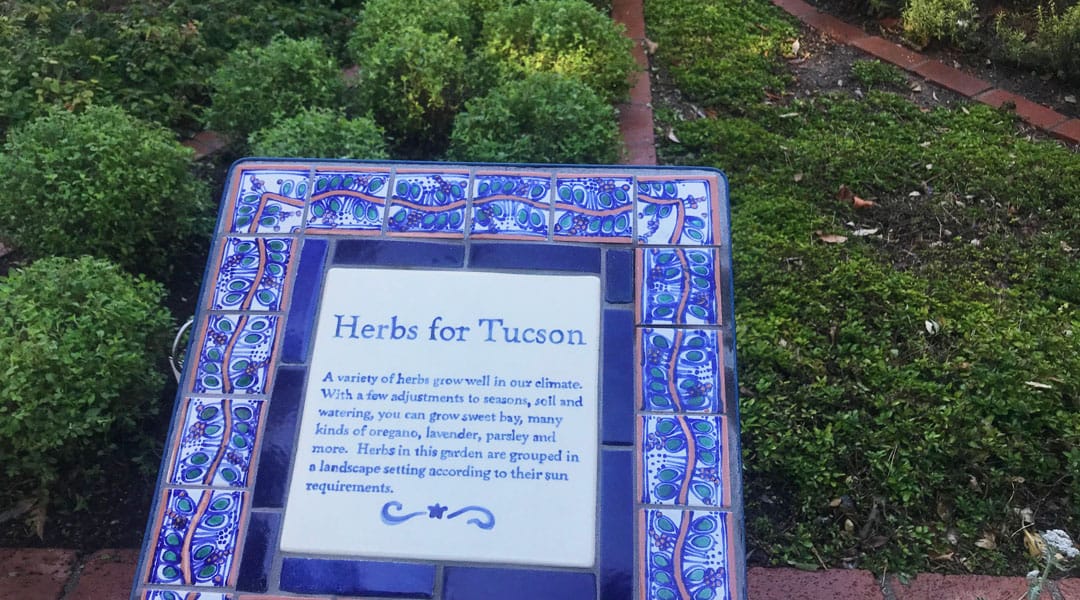
Learn what herbs grow well in Tucson in the Tucson Botanical Garden’s herb garden area
Find Inspiration for Your Yard and Garden
The founder of Tucson Yard and Garden, Monica Hemingway, was the “local garden expert” for Garden Design Magazine’s article, Fabulous Gardens in Tucson, Arizona. The Tucson Botanical Gardens was one of her three recommended places to visit on a day trip because homeowners can replicate many of the things that you see throughout the gardens.
Tucson Botanical Gardens are truly representative of the city in which it is located. You will see plenty of trees, cactus, and plants that work well in Tucson’s climate, but very few that work better for other climates (the butterfly exhibit, which is kept humid, is one exception). While the gardens may not look like other botanical gardens around the country, it is much more helpful for those of us that are trying to create an oasis on our own Tucson properties, whether that be several acres of land or an apartment balcony.
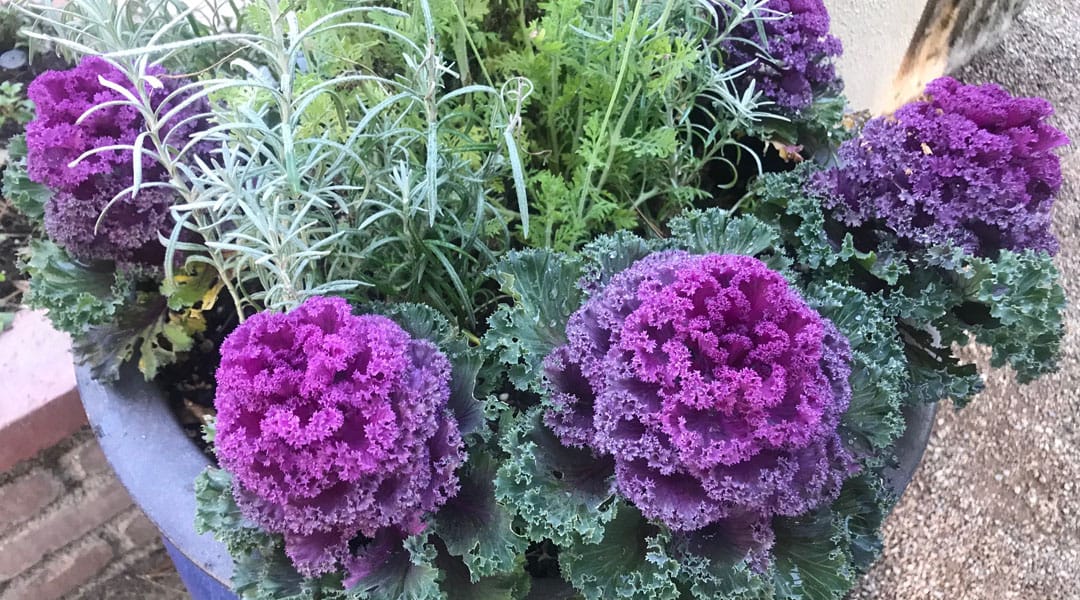
Looking for ways to add color to your yard? Tucson Botanical Garden has plants and designs that you can implement at your own home
The herb garden, for example, shows what herbs grow well in our Tucson climate. We saw rosemary, oregano, parsley, and other herbs useful for cooking or for display.
Even if you only have space for container gardening, there are many different plants growing in containers throughout the gardens that can provide inspiration for your own planting goals.
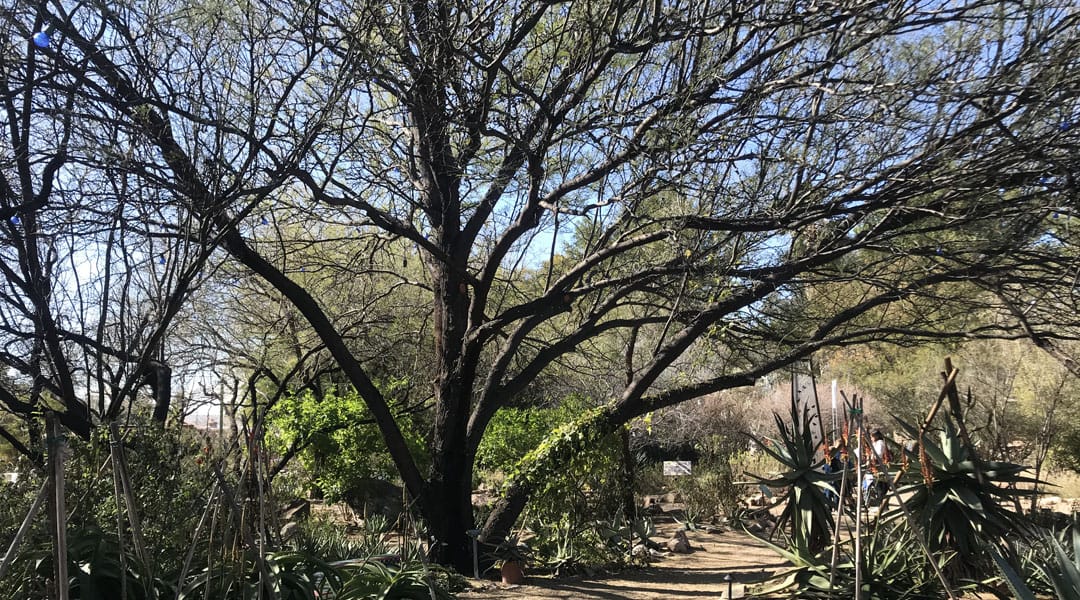
Much of the garden (except for the cactus garden) is covered by large shade trees. It makes walking through the garden a pleasant experience on warm days.
Cool Down in the Shade
Did you know that the hackberry tree has been named the 2020 urban tree of the year? I did, so I was excited to see its close relative, the netleaf hackberry, on the grounds of the Tucson Botanical Gardens.
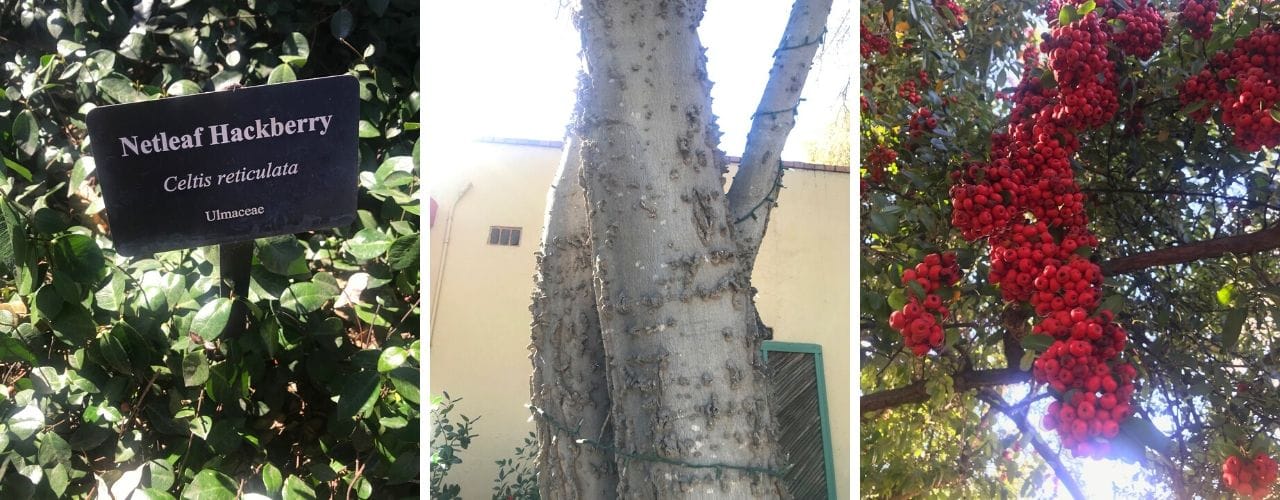
Netleaf Hackberry tree at the Tucson Botanical Garden
My friend and I enjoyed the sunny, pleasant day as we wandered through the areas shaded by trees, and both commented on the warmer temperatures once we reached the more cactus-heavy area of the gardens (where there were fewer trees for shade).
If you’d like more shade in your own yard, see our article for ideas on how to create shade in your Tucson yard.
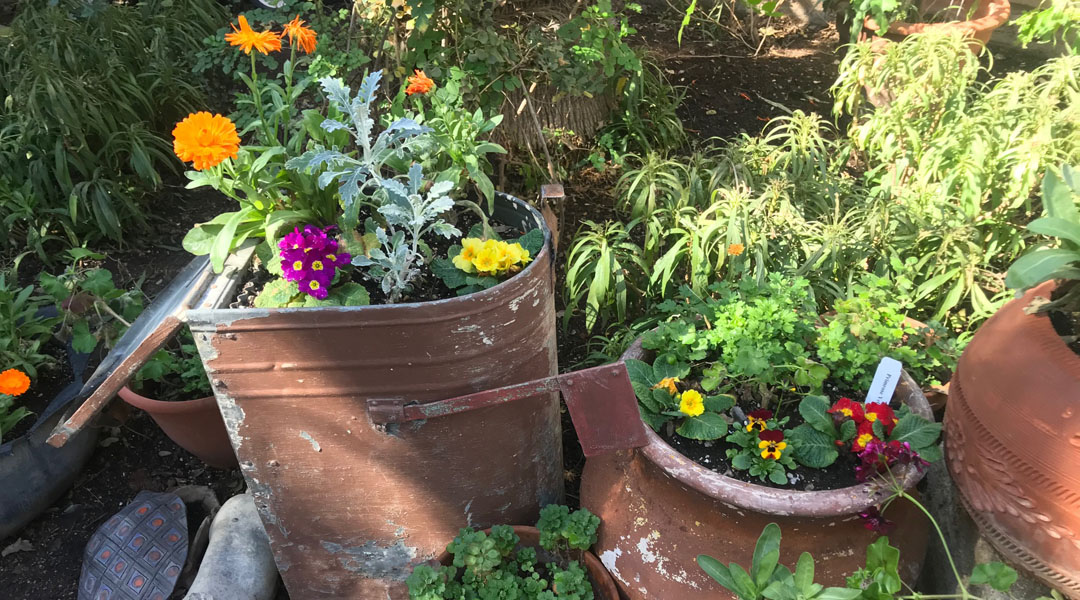
Be creative! This Tucson Botanical Garden display uses an old mailbox as a planter.
Explore Your Creative Side
As you wander through the gardens, you can marvel at how prickly pear cactus and mesquite trees are so intertwined that you can’t always tell where one begins and the other ends. You can laugh at the inventive names for the iris plants. Be inspired to use unusual objects like a mailbox or an old mattress spring for planters and succulent displays.
There’s even a section where you can stop to make a word poem out of rocks.
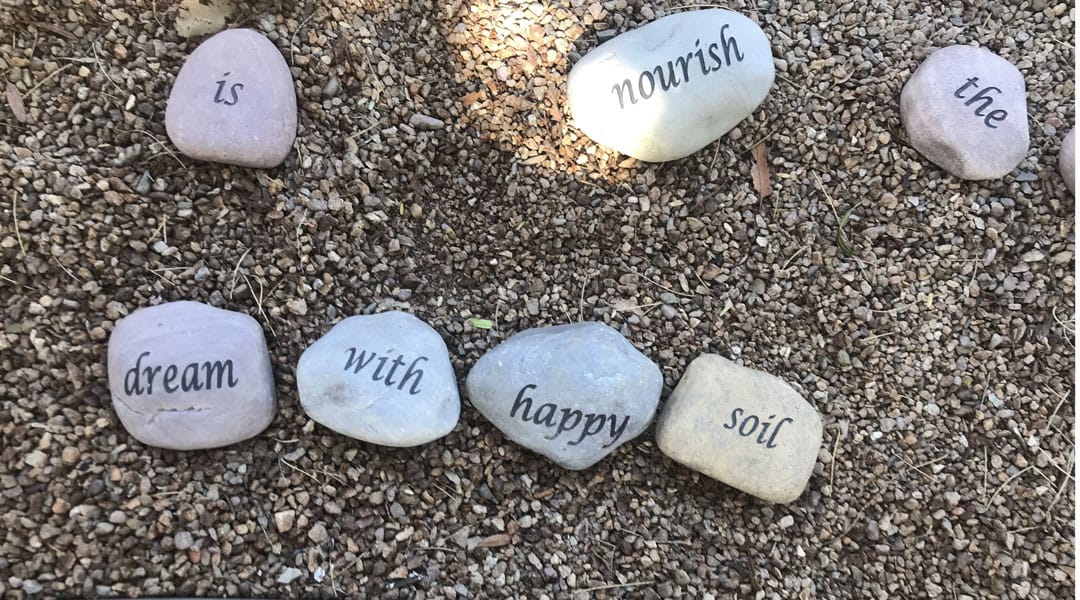
Stop to make some rock poetry at the Tucson Botanical Gardens
Speaking of being creative, the Tucson Botanical Gardens host a variety of classes and events – everything from tree pruning workshops to science talks to watercolor classes. Check out their schedule of classes here.
Note: as of August 2020 classes are paused.
Discover Something New (To You)
There are several sections of the Tucson Botanical Gardens to explore. According to the website, there are actually 17 different gardens, from a wildflower garden to a zen garden. The cactus and succulent garden has so many varieties of cactus, you may discover a new one each time you visit.
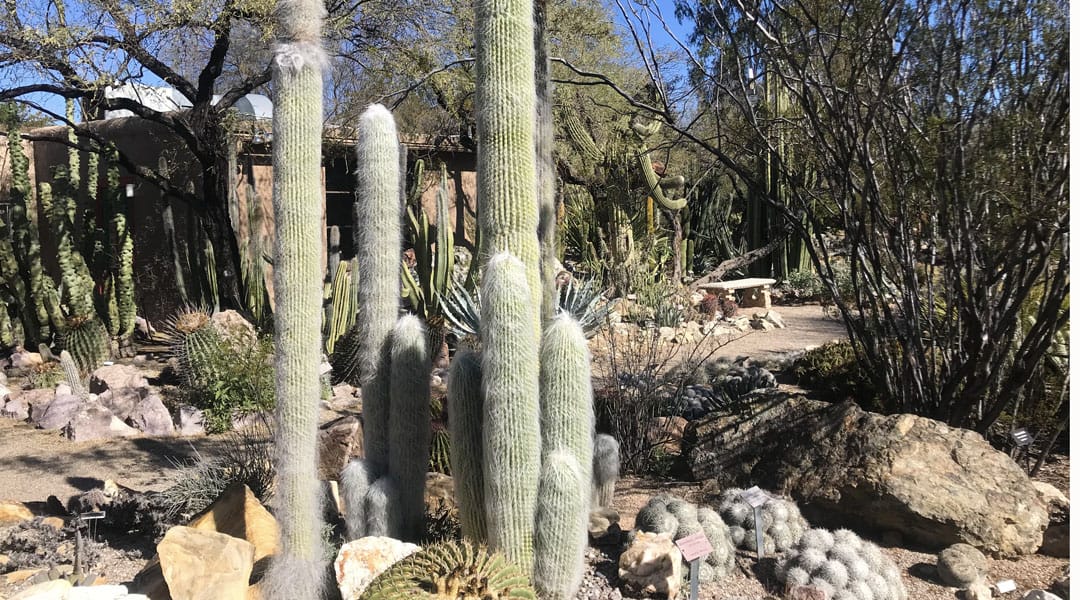
Many types of cactus can be viewed at the Tucson Botanical Gardens
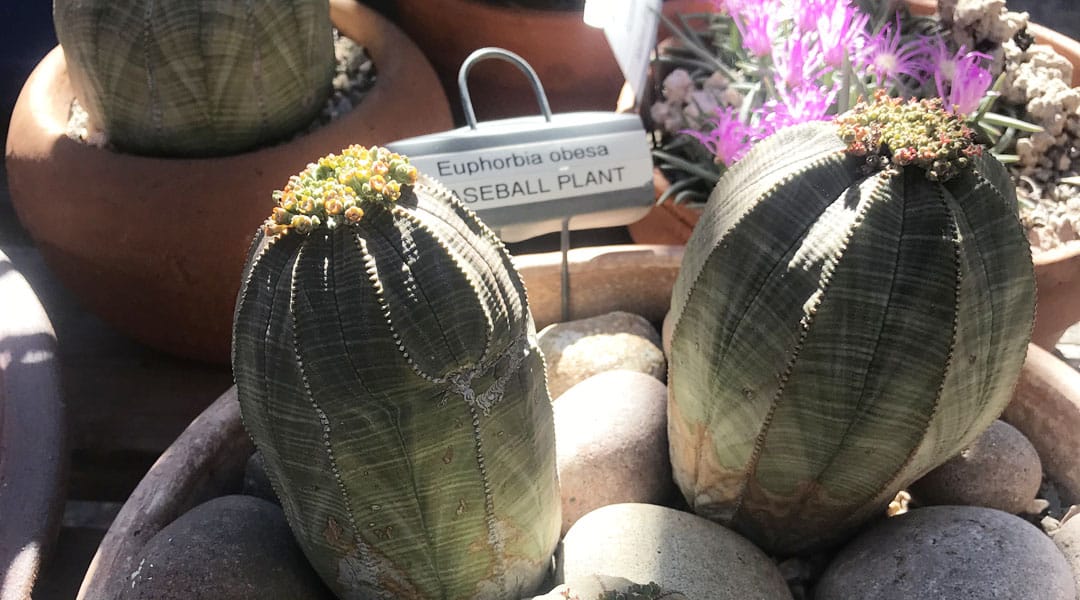
Learn about new and familiar varieties of cactus at the Tucson Botanical Gardens
Learn a New Skill
Someone in the Tucson Yard & Garden Facebook group had recently asked a question about how to get started with composting. The Tucson Botanical Gardens have a demonstration area where you can learn all about what and how to compost – it’s right next to the chickens!
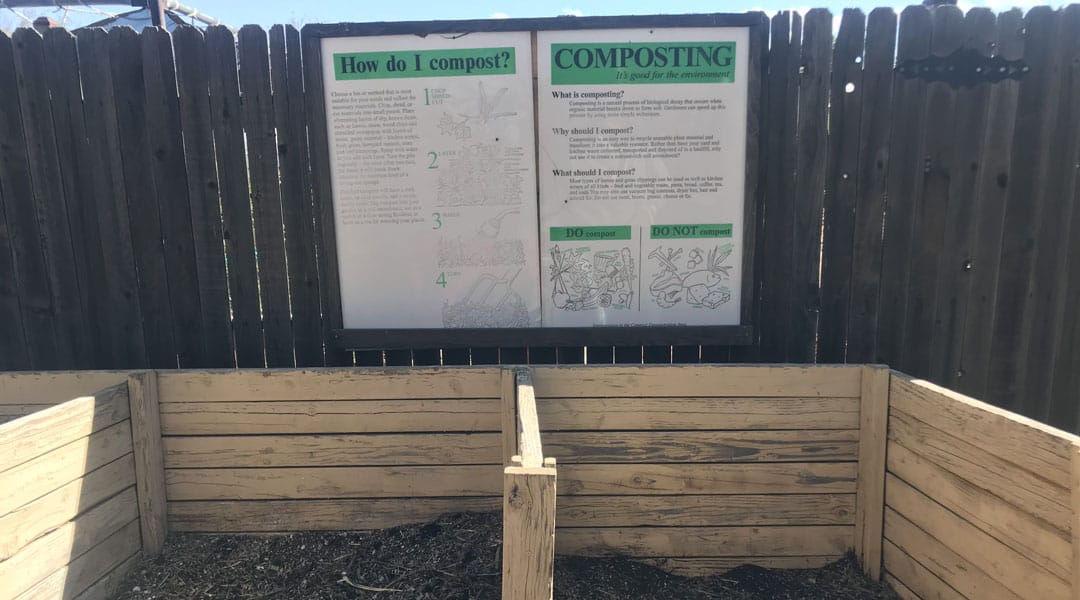
Learn composting tips at the Tucson Botanical Gardens
Stay Inspired Year-Round
Sculptures and waterfalls were part of the temporary exhibit when we visited the gardens in February 2020. One of the great things about getting a membership to places like the Tucson Botanical Gardens is that you can see several different exhibits over the course of a year.
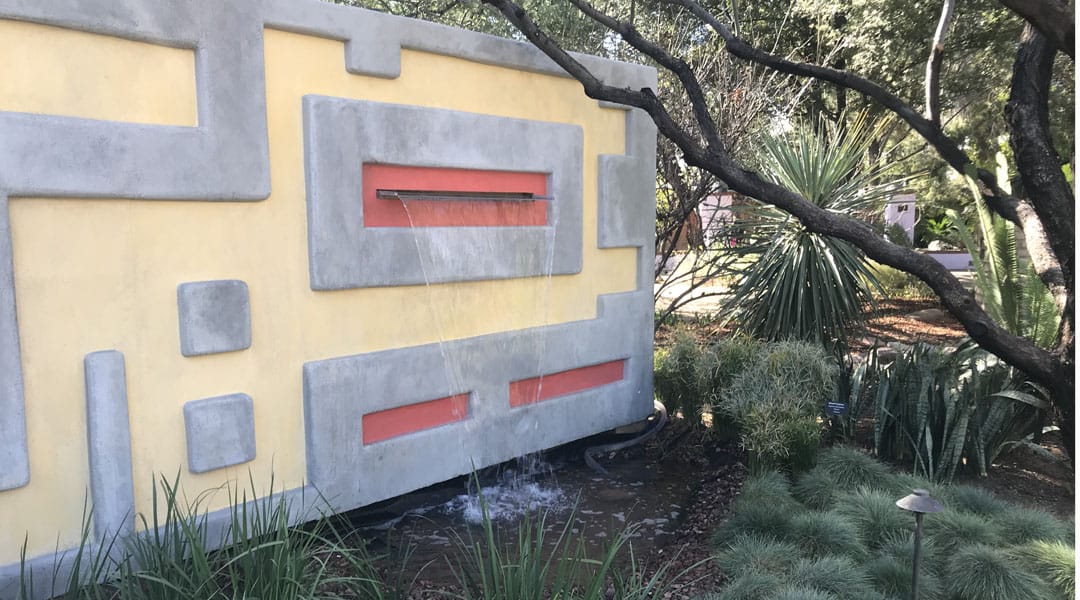
Part of the Roberto Marx exhibit at the Tucson Botanical Gardens
The exhibits aren’t the only things that change throughout the year. The photos in this article are from February 2020, but the trees, plants, and flowers can change drastically from month to month. In the spring, you may notice trees in bloom, getting ready to sprout their summer leaves. In the summer months, Texas sage might steal the show with hundreds of tiny purple flowers brought out by monsoon moisture. It’s worth visiting during different times of the year to see how plants and trees look different during different seasons.
Find Different Gardens for Different Styles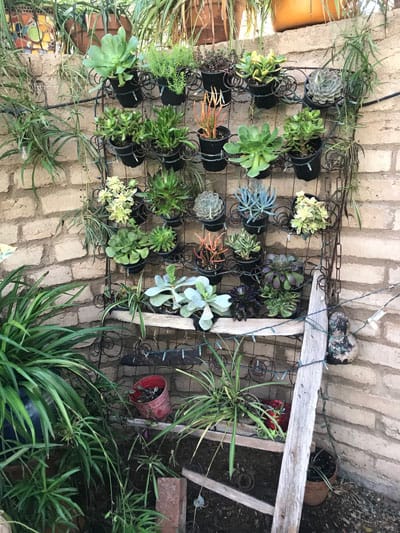
Though occupying a relatively small area in the middle of Tucson, Tucson Botanical Gardens have a garden for every design style or plant preference. On this visit, one of our favorite sections of the Tucson Botanical Gardens was a small walled-in area called the Nuestro Jardin (Barrio Garden). If you go yourself, you’ll spot some very creative containers used as planters, including a sink, a mailbox, and even an old mattress spring!
In Summary
The Tucson Botanical Gardens are not too large to be overwhelming – you can easily see the entire thing in one visit, eat lunch, and head off to another part of town.
They are a great way to see both newly-planted and established trees and plants. If you’ve visited other botanical gardens, this Tucson one will be different purely because of the types of plants that can grow here.
This botanical garden doesn’t showcase weeping willows or maple trees. Instead, it features native and desert-adapted trees, shrubs, succulents, vegetables, and plants that you can then plant in your own yard or garden.
In summary, some of the best reasons to visit the Tucson Botanical Gardens include:
- taking a break from everyday life,
- finding some inspiration for your own yard,
- learning about other varieties of plants, cactus, trees, or flowers,
- taking out-of-town visitors to one of our city’s most beautiful spots,
- and more!
So what are you waiting for? Plan a trip to the Tucson Botanical Gardens soon!
